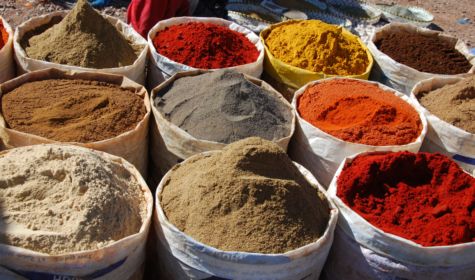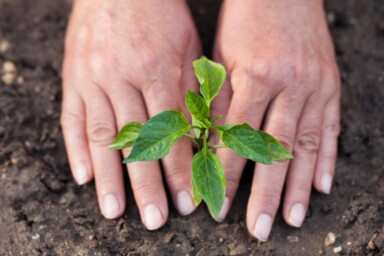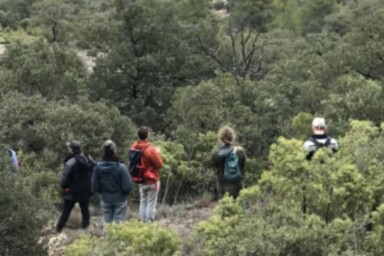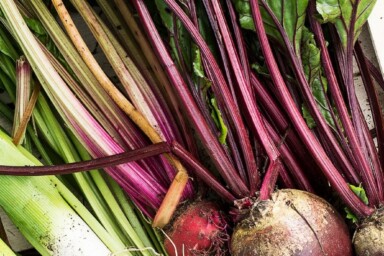Divided agriculture
Moroccan agriculture is divided between a modern industrial sector that primarily produces food for export, and smallholdings that produce food mainly for local markets and farmers’ own subsistence.
More than 70% of farmers work fewer than five hectares, but this accounts for only a quarter of the total land under cultivation: the large farms dominate the fertile areas. Inevitably, the large farms have a more substantial income, earning approximately nine times more than the average family farm. Many small farms face problems that make it difficult to increase their earnings, including ambiguous land ownership, a lack of infrastructure or access to credit, and poor technical and marketing support. Without registered land, small farmers cannot benefit from government programmes, and even with registered land, many programmes favour larger farms.
The geographical diversity of Morocco results in varied agriculture, with crops ranging from cereals and vegetables to fruits and nuts. Citrus, almonds, argan and olives are major products in the country. Fish are also a significant industry, representing 55% of food exports. This diversity must be celebrated as one of Morocco’s greatest assets; it contributes significantly towards the country’s agricultural sustainability and food security.
Livestock are another major sector of Moroccan agriculture, contributing to the income of more than 80% of the rural population. Animals act as a financial reserve for farmers and as security against the impact of drought. Large numbers of cattle, sheep, goats and dromedaries (Arabian camels) graze 53 million hectares of extensive rangelands.
Drought and soil erosion
A major problem facing Morocco is the impact of climate change and the increased prevalence of drought. Morocco has suffered a drought every three years over the past few decades, with temperatures predicted to rise by three degrees by 2050 and rainfall to decline by 10%. In this same period, demand for water is projected to increase by six times. With most farmland located in areas that receive less than 400mm of rainfall each year, this has serious implications. The government faces a huge challenge in mitigating the impact of climate change, and has even been attempting to desalinate seawater for agricultural use.
These prolonged droughts are increasing soil degradation, with desertification threatening 80% of land, and soil erosion affecting nearly half of it. A rising population is leading to increased pressure on resources and the removal of natural vegetation as more land is converted to cultivation. The erosion rate in the Rif Mountains, for example, is one of the most severe in the world. This problem is also causing water pollution through rising siltation levels in reservoirs and oceans, and is leading to conflict in regions where land is collectively owned and grazed.
What is the solution to such a large-scale problem? The government is attempting to tackle these issues by increasing irrigation infrastructure and encouraging drought-resistant crops. But modern practices, such as intensive cropping under irrigation and heavy tillage, is leading to loss of soil organic matter. Perhaps part of the solution lies with more traditional practices. Mixed farming seems to be an important aspect of Moroccan agriculture, and using livestock manure to build soil fertility is highly valuable.
Food security and socio-economic issues
Morocco’s rural areas have poor socio-economic infrastructure, low levels of education and an ageing farmer population. Small farmers are economically vulnerable, particularly to instability in global markets and the impact of large farmers flooding local markets with produce when they fail to sell it abroad. One report says farmers are “not equipped to face the challengesof an economy that is opening up to free market competition”, yet this seems to be where Moroccan agriculture is heading – there is a greater emphasis on cash crops and a “progressive transition towards liberalisation”.
Morocco is highly dependent on imports, consuming three times the amount of imported cereal than the world average. But current policy encourages farmers to produce cash crops for export rather than food for their own population. The government has also leased land to foreign investors – such as the 700,000 hectares leased to an investment firm from Abu Dhabi. “The investors can keep 100% of the produce and export it, all we are asking is for them to invest in our sector and create employment for our people,” one official said.
This shows the degree to which raising income is a priority over producing food for domestic consumption. But what are the long-term costs of such an approach? Will Morocco’s vibrant and diverse local food economy be lost? There is already a loss of farmers, as people from rural areas migrate to cities for work – urbanisation is now at 50%.
The Green Morocco Plan
The government’s attempt to deal with its agricultural problems is embodied in The Green Morocco Plan, which began in 2008. This plan has two pillars, one addressing the large intensive farms, and the other addressing the small subsistence farms. It aims to double the value of agricultural production, increase productivity and improve food security. On the one hand it is progressing towards liberalisation and modernisation, but on the other it claims to maintain the ‘social character’ of Moroccan agriculture.
The plan is comprised of 1,500 programmes requiring more than $10 billion to implement. It includes the construction of dams, the expansion of irrigation and the conversion to crops better suited to the climate. One component of it involves planting fruit and olive trees in former grain fields.
While many of these programmes are beneficial, some believe the Plan gives priority to large intensive farming. There is concern that the government, urged along by international development organisations and commercial seed and chemical corporations, is pushing further a model of intensive agriculture that is dependent on the global market and free trade. Simon Gray, World Bank Maghreb Country Director, prioritises Morocco’s integration into the global economy, and developing a liberalised market environment. But will this really improve Morocco’s long-term economic sustainability and food security?
Hafez Ghanem, at the Brookings Institute, speaks for many when he writes that the government needs to put more emphasis on the Plan’s second pillar. Ghanem argues that increasing food reserves, improving links to markets and supporting the development of independent producer organisations should be the priority of government policy. This would strengthen the resilience of smallholders and enable them to contribute meaningfully to a sustainable food supply for Morocco.
Co-operatives, organic farming and community supported agriculture
One way to support small farmers is through cooperatives and community supported agriculture (CSA). Cooperatives can share the costs of machinery and packaging, as well as provide training and support. Community-managed tree nurseries are providing trees at a fraction of the cost of large commercial nurseries. Working together can help small farmers fare better in the global economy. Pooling produce allows them to compete with larger farms.
Many farmers are passionate about becoming more sustainable. A cooperative in a village near Taounate has a field school where farmers are experimenting with more sustainable farming practices. This is allowing farmers to do their own research and develop solutions for themselves.
Organic farming is also becoming popular in Morocco. One CSA association, Sala Almoustaqbal, began producing organic food that it sells directly to the consumer. Support for the project is growing, with a waiting list of over 100 families.
Another farmer, Abdellah Boudhira, has transitioned from modern intensive farming, using patented hybrid seeds, back to traditional organic practices using only heritage seeds, which he believes taste better and have much higher nutritional value. He has also decided to sell directly to customers, as dependence on middlemen to access the market results in such low prices for producers and high costs for consumers. Boudhira’s farm has garnered a following on social media as he attempts to raise his profile and encourage sustainable organic agriculture. He says that more people in Morocco are becoming interested in healthy organic food, and that, “Healthy food can be affordable for everybody if we farm wisely, and don’t rely on chemical corporations.”
Boudhira’s success shows that farmers can be willing to change the way they farm and to become more sustainable. But they need support to do so – through financial assistance, training and improved infrastructure. Government policy should give meaningful help to these small-scale farmers, and not simply facilitate the growth of intensive agriculture.
What next for Morocco?
Morocco faces multiple problems of climate change, drought and soil degradation. The divide between rich and poor, between large and small farms, requires an imaginative and diverse approach to improving agriculture. But with smallholders comprising such a major part of the sector, there is real opportunity to improve people’s livelihoods and food security, as well as to prevent further environmental degradation. Government policy needs to recognise the integral importance of smallholders, not simply for their ‘social character’, but for the real value they add to Moroccan food systems. These hard-working people will hold the key to Morocco’s future.
You can read more about Abdellah in the premiere issue of Rodale’s Organic Life, on stands next week, find out more at www.rodalesorganiclife.com





